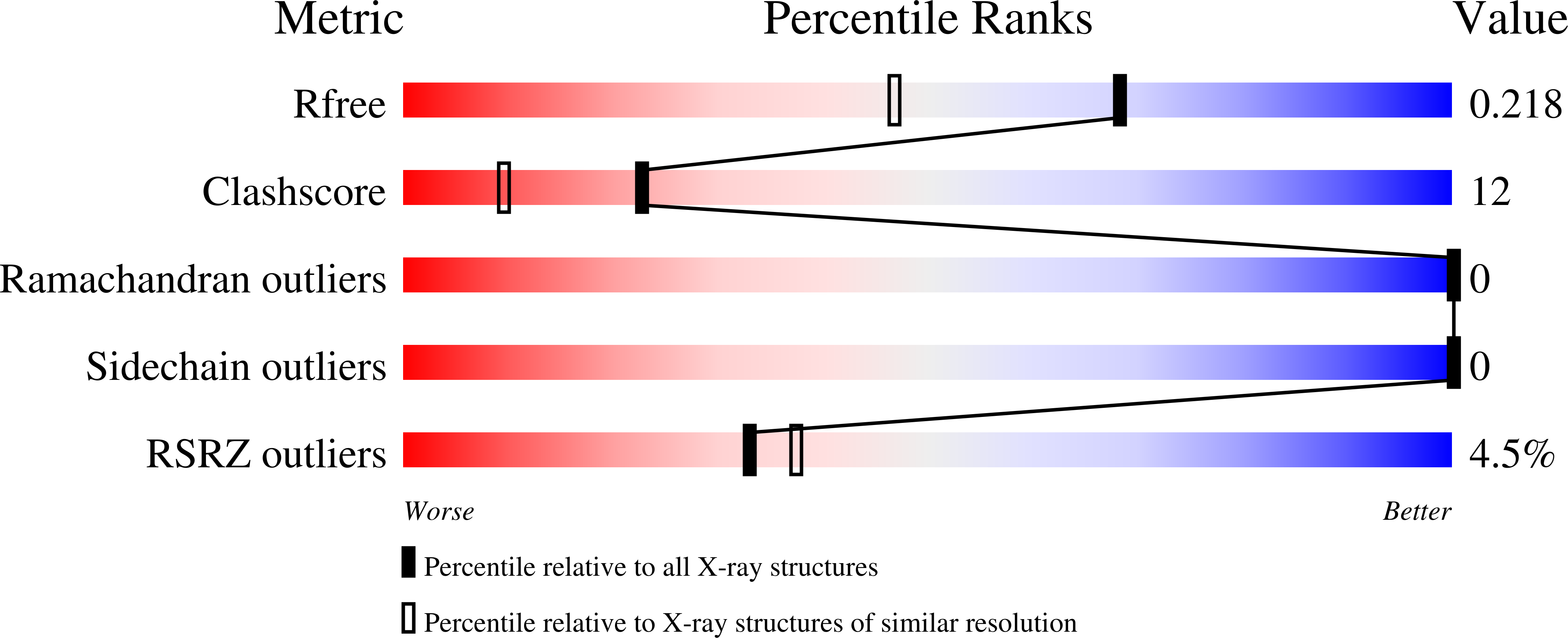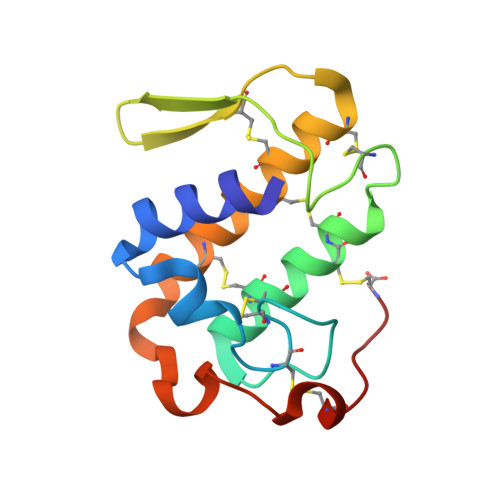Search for efficient inhibitors of myotoxic activity induced by ophidian phospholipase A2-like proteins using functional, structural and bioinformatics approaches.
Salvador, G.H.M., Cardoso, F.F., Gomes, A.A., Cavalcante, W.L.G., Gallacci, M., Fontes, M.R.M.(2019) Sci Rep 9: 510-510
- PubMed: 30679550
- DOI: https://doi.org/10.1038/s41598-018-36839-6
- Primary Citation of Related Structures:
6MQD, 6MQF - PubMed Abstract:
Ophidian accidents are considered an important neglected tropical disease by the World Health Organization. Particularly in Latin America, Bothrops snakes are responsible for the majority of the snakebite envenomings that are not efficiently treated by conventional serum therapy. Thus, the search for simple and efficient inhibitors to complement this therapy is a promising research area, and a combination of functional and structural assays have been used to test candidate ligands against specific ophidian venom compounds. Herein, we tested a commercial drug (acetylsalicylic acid, ASA) and a plant compound with antiophidian properties (rosmarinic acid, RA) using myographic, crystallographic and bioinformatics experiments with a phospholipase A 2 -like toxin, MjTX-II. MjTX-II/RA and MjTX-II/ASA crystal structures were solved at high resolution and revealed the presence of ligands bound to different regions of the toxin. However, in vitro myographic assays showed that only RA is able to prevent the myotoxic effects of MjTX-II. In agreement with functional results, molecular dynamics simulations showed that the RA molecule remains tightly bound to the toxin throughout the calculations, whereas ASA molecules tend to dissociate. This approach aids the design of effective inhibitors of PLA 2 -like toxins and, eventually, may complement serum therapy.
Organizational Affiliation:
Depto. de F¨ªsica e Biof¨ªsica, Instituto de Bioci¨ºncias, UNESP - Universidade Estadual Paulista, Botucatu, SP, Brazil.
















